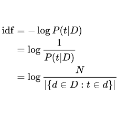The medical domain is often subject to information overload. The digitization of healthcare, constant updates to online medical repositories, and increasing availability of biomedical datasets make it challenging to effectively analyze the data. This creates additional work for medical professionals who are heavily dependent on medical data to complete their research and consult their patients. This paper aims to show how different text highlighting techniques can capture relevant medical context. This would reduce the doctors' cognitive load and response time to patients by facilitating them in making faster decisions, thus improving the overall quality of online medical services. Three different word-level text highlighting methodologies are implemented and evaluated. The first method uses TF-IDF scores directly to highlight important parts of the text. The second method is a combination of TF-IDF scores and the application of Local Interpretable Model-Agnostic Explanations to classification models. The third method uses neural networks directly to make predictions on whether or not a word should be highlighted. The results of our experiments show that the neural network approach is successful in highlighting medically-relevant terms and its performance is improved as the size of the input segment increases.
翻译:医疗领域往往受到信息超载的影响。 医疗保健的数字化、在线医疗库的不断更新以及生物医学数据集的日益普及使得有效分析数据成为挑战。 这为严重依赖医疗数据完成研究和咨询病人的医疗专业人员创造了额外的工作。 本文旨在显示不同的强调技术的文本如何能捕捉相关的医学环境。 这将减少医生的认知负荷和病人的反应时间,便利他们作出更快的决定,从而改善在线医疗服务的总体质量。 实施和评估了三种不同的强调医疗方法的字级文本。 第一个方法直接使用TF-IDF的评分来突出文本的重要部分。 第二个方法是将TF-IDF的评分和对分类模型应用本地可解释模型解释相结合。 第三个方法直接使用神经网络来预测是否应该突出一个单词。 我们的实验结果表明神经网络方法在突出医学相关术语方面是成功的,随着输入部分的扩大,其性能会得到改善。




